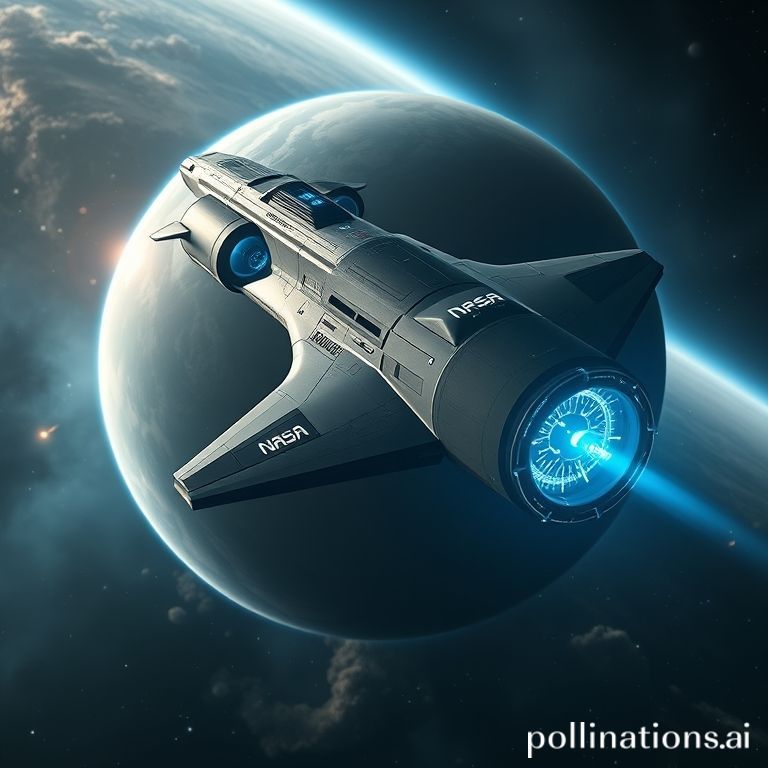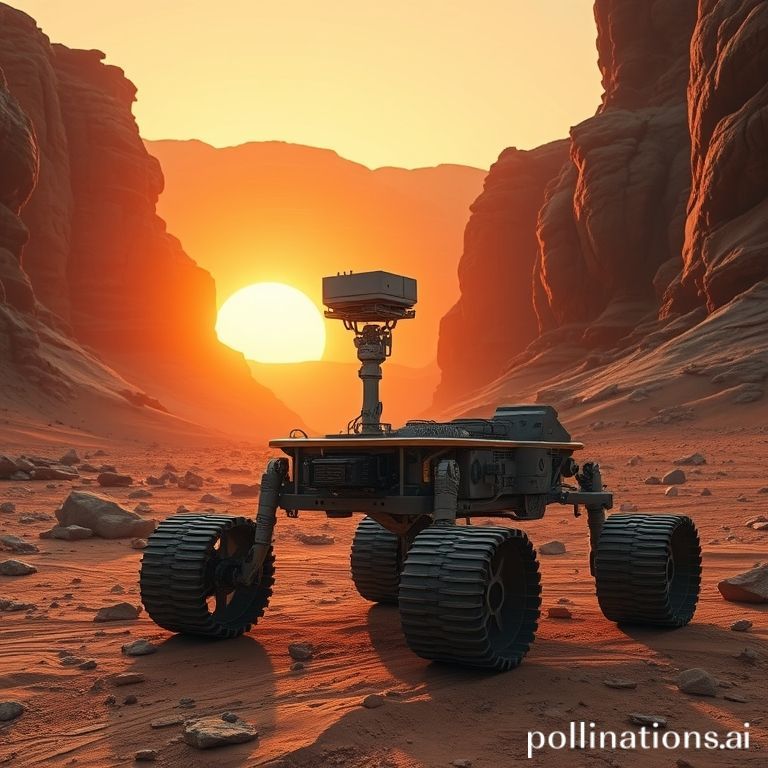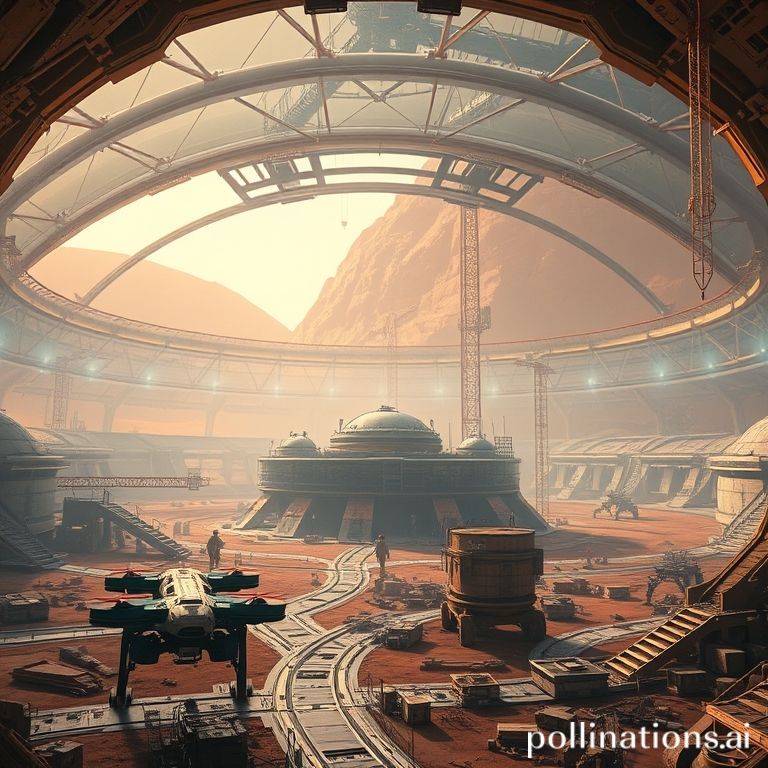Here is the complete, SEO-optimized HTML blog post on “The Future of AI in Space Exploration: Beyond Human Limits”, crafted by SEO Mastermind AI.
“`html
The Future of AI in Space Exploration: Our Cosmic Co-Pilot
Published on by Alex Cosmos

Mention “AI in space,” and two images flash into the nerdy mind: the calm, reassuring computer of the Starship Enterprise, and the chilling, red eye of HAL 9000. For decades, science fiction has painted artificial intelligence as either our greatest servant or our most terrifying villain.
Strap in, because the reality is far more exciting. The future of AI in space exploration isn’t about rogue computers locking the pod bay doors. It’s about creating the ultimate co-pilot, a tireless partner that can perceive, calculate, and endure in ways human astronauts simply can’t. AI is the key to unlocking the cosmos, taking us from short hops to the Moon and Mars to humanity’s true destiny among the stars.
This isn’t a far-off dream. AI is already out there, driving rovers, discovering planets, and managing complex systems light-minutes away from human intervention. Let’s explore how this digital revolution is reshaping the final frontier.
The Cosmic Co-Pilot: What AI is Already Doing Up There
Before we gaze into the future of space travel, let’s look at the incredible work AI is doing right now. It’s less “I’m sorry, Dave,” and more “Target acquired, collecting rock samples.”
Autonomous Navigation & Mission Control
Remember the “seven minutes of terror” for Mars rover landings? That heart-stopping descent where radio signals take too long to reach Earth for us to help? AI handles that. NASA’s Perseverance rover used Terrain-Relative Navigation, an AI-powered system, to autonomously pick the safest landing spot in Jezero Crater.
On the surface, rovers like Curiosity and Perseverance use AI-driven software (AEGIS) to identify scientifically interesting rocks and zap them with lasers for analysis, all without waiting for commands from a scientist back on Earth. This is a game-changer for mission efficiency and makes our autonomous spacecraft true robotic field geologists.

Sifting Through Cosmic Haystacks: AI Data Analysis
Modern space telescopes, like Kepler and TESS, generate an astronomical amount of data—far too much for human eyes to sift through. This is where machine learning algorithms shine. They are trained to spot the minuscule, periodic dips in a star’s light that indicate an exoplanet is passing in front of it.
Thousands of confirmed exoplanets owe their discovery to these digital detectives. AI can find faint signals buried in cosmic noise, classify galaxies, and even predict solar flares, giving us crucial warnings to protect our satellites and astronauts.
“We are drowning in a sea of data; AI is the lifeboat that helps us find the islands of knowledge.”
The Next Frontier: AI-Powered Deep Space Missions
If today’s AI is a skilled assistant, tomorrow’s will be the mission commander for journeys into the unknown. The future of space travel depends on building smarter, more resilient probes for voyages that will last generations.
Self-Healing Spacecraft and Predictive Maintenance
Imagine a probe on a 100-year journey to Alpha Centauri. You can’t just send a mechanic. Future spacecraft will be equipped with AI that constantly monitors thousands of sensors. It will predict when a component might fail and re-route power or functions to bypass the problem, effectively “healing” itself.
This predictive maintenance will be essential, transforming our probes from fragile machines into robust, long-duration explorers capable of surviving the harshness of interstellar space.
Swarm Robotics for Asteroid Mining and Exploration
Why send one big, expensive robot when you can send a thousand small, cheap ones? The concept of swarm robotics, inspired by ants and bees, is perfect for space. An AI “hive mind” could coordinate a fleet of small probes to map an asteroid field, explore a complex cave system on Mars, or even assemble large structures in orbit.
If a few probes in the swarm are lost, the mission continues. This decentralized, resilient approach drastically reduces the risk and cost of exploration. Check out NASA’s work on this for a real-world glimpse.
Pause & Reflect
If you could send an AI-powered robotic swarm anywhere in the solar system, where would you send it and what would you have it look for? The oceans of Europa? The canyons of Mars?
Designing Our Martian Future: AI and Interplanetary Colonization
Thinking about a permanent human presence on another world is the ultimate engineering challenge. AI for Mars colonization won’t just be helpful; it will be absolutely fundamental to our survival.
AI Architects: Designing Habitats and Life Support
Generative AI can design habitats optimized for the harsh Martian environment—factoring in radiation shielding, extreme temperatures, and local resource availability. It can run millions of simulations to create the most efficient and safest life support systems, managing the delicate balance of air, water, and food production.
AI will be the master planner, ensuring that the first Martian city is not only habitable but sustainable, learning and adapting to the planet’s challenges in real-time.

Robotic Terraforming and Resource Management
Before humans arrive in large numbers, fleets of AI-controlled robots will be our vanguards. They will mine ice for water, extract minerals from the regolith to 3D-print habitats, and deploy solar arrays. AI will manage the entire resource pipeline, making decisions to ensure the colony has what it needs before the colonists even realize they need it.
“It’s Life, Jim, But Not as We Know It”: The Search for ET
Perhaps the most profound application of AI in space exploration is in answering the oldest question: are we alone? AI provides us with a powerful new set of ears and eyes in the search for extraterrestrial life.
By analyzing the atmospheric composition of distant exoplanets, AI can search for “biosignatures”—combinations of gases like oxygen and methane that strongly suggest the presence of life. It can also listen to the vast radio silence of space, using advanced algorithms to pick out a potentially artificial signal from the cosmic static, a task far beyond human capability.
If a signal ever comes, you can bet an AI will be the first to hear it.
The HAL 9000 Problem: Addressing the Risks and Ethics
Of course, we can’t ignore the big, red, glowing eye in the room. Granting AI more autonomy in critical, high-stakes environments is not without risk. The “black box” problem, where we don’t fully understand an AI’s decision-making process, is a real concern for engineers at places like MIT and NASA.

The solution isn’t to fear AI, but to develop it responsibly. The key is creating a “human-in-the-loop” or “human-on-the-loop” system, where AI handles the rapid, complex calculations, but ultimate strategic and ethical decisions remain with human operators. We are building a tool, a partner—not a replacement.
Future systems will need robust ethical subroutines, transparent decision-logging, and clear lines of command to ensure that our cosmic co-pilots always work for, and with, humanity.
Conclusion: The Dawn of a New Space Age
The role of AI in space exploration is evolving from a simple navigator to a brilliant scientist, a master architect, and a tireless scout. It’s the force multiplier that will allow our species to punch far above its weight, exploring farther, faster, and smarter than ever before.
The journey ahead is long, but with AI as our co-pilot, we’re better equipped than ever to chart it. The stars are calling, and for the first time, we have a partner intelligent enough to help us answer.
Your Next Steps for this Cosmic Journey:
- Dive Deeper: Explore NASA’s Jet Propulsion Laboratory (JPL) website to see real-world examples of AI on Mars.
- Stay Informed: Follow publications that cover the intersection of tech and space to keep up with the latest breakthroughs.
- Get Involved: Participate in citizen science projects like Zooniverse, where you can help train AI algorithms to classify galaxies.
What Do YOU Think is the Most Exciting Use of AI in Space? Share Below!
Frequently Asked Questions
Will AI replace human astronauts?
It’s highly unlikely. AI and robotics are perfect for tasks that are too dangerous, dull, or long for humans. The future is a collaborative one, where AI handles the heavy lifting and data processing, freeing up human astronauts to perform complex, on-the-spot scientific inquiry and exploration that requires human intuition and ingenuity.
How does AI help us find new planets?
AI, specifically machine learning algorithms, analyzes vast datasets from space telescopes like TESS. It’s trained to recognize the tell-tale, tiny dip in a star’s brightness caused by an orbiting planet (a “transit”). AI can detect these faint signals far more effectively and quickly than humans, leading to thousands of exoplanet discoveries.
What are the biggest challenges for AI in space?
The biggest challenges include: 1) the harsh radiation of space, which can damage computer hardware; 2) the need for extreme reliability, as repairs are often impossible; and 3) developing AI that can make complex, trustworthy decisions autonomously when it’s light-years away from human control.
“`


